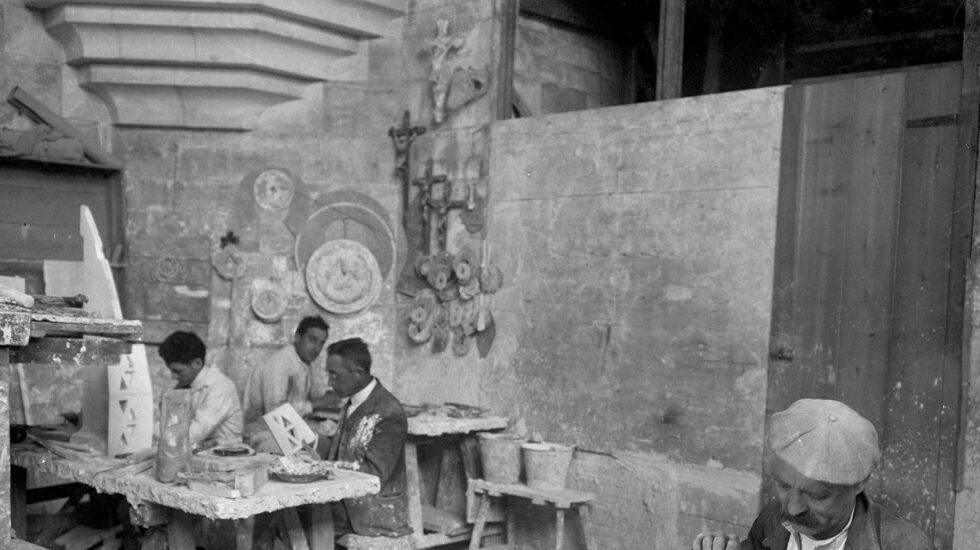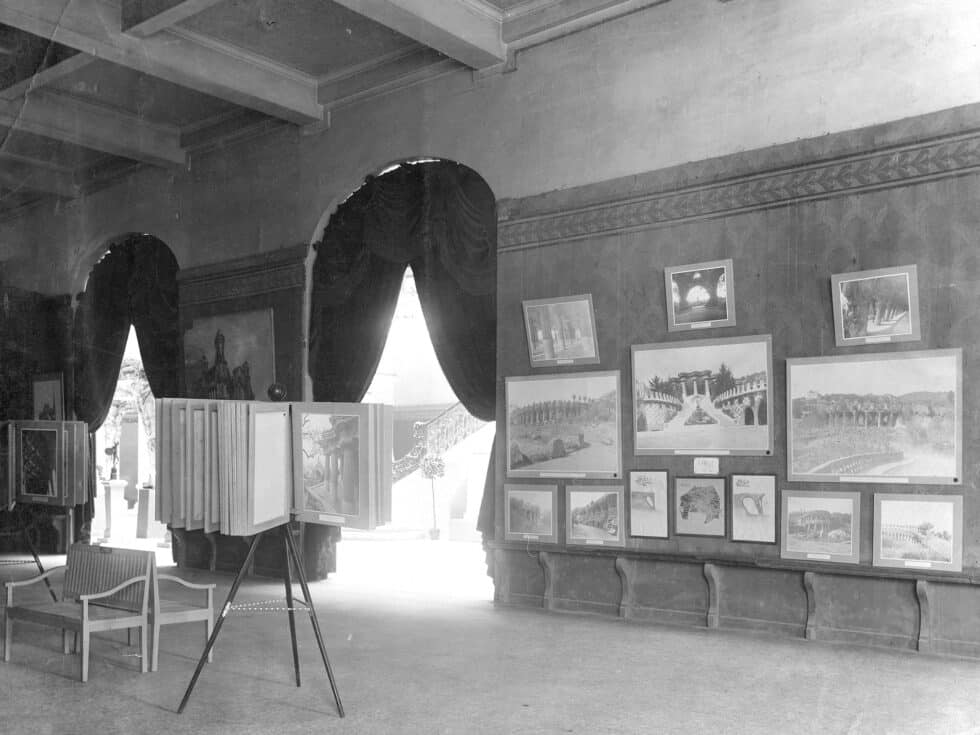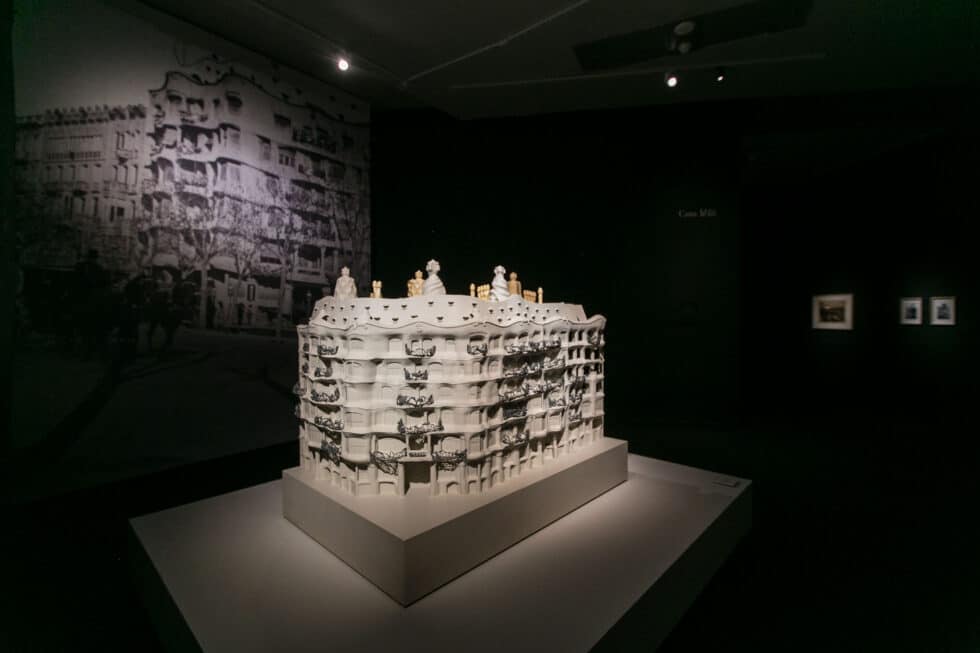

Modeling Workshop of the Holy Family, 1917.
Plans, drawings, models, furniture, architectural elements, sculptures, photographs and audiovisual materials that rediscover Antonio Gaudi (1852-1926) at the CentroCentro in the first exhibition in over 20 years that explores from the origins of the virtuous architect’s work to its climax. More than 150 exhibits, framed on the seven stages of the route, highlight the “originality of forms, ornamentation, chromaticism, the richness of symbols and their inspiration in nature,” as highlighted in the presentation. Gaudi Charo Sanjuan, exhibition curator.
The cultural space of the Palacio Cibeles hosts an exhibition dedicated to the less visible columns that support the architectural genius of Gaudí until February 5th. Apart from the elements that at first glance shine from the author, the environment created next to the headquarters of the City Council of Madrid focuses on the aspects that “underlie his work”. “Behind the form lies the rationality of his building system and the fact that his architecture is a marvel of ingenuity, design and innovation, the fruit of his own genius, as well as the research and painstaking and enormous work to which he devoted his whole life,” says Sanjuan , who explained that Gaudí’s work was “novelty” since the first exhibition organized for him in 1910 in Paris, thanks to the method he used of showing his work with photographs to those people who did not understand the plans and thus attract them interest.
Trained according to the canons of the time at the Escola Provincial d’Arquitectura de Barcelona, Gaudí appeared in that period of creative upsurge that is Catalan Modernism and developed new and different architecture, following his own path as an individual creator; closely connected, in turn, with the Catalan cultural reality and aware of the renewing currents of European art of the second half of the 19th century and the beginning of the 20th century. In statements collected by Europa Press, Sanjuan hints at the importance of Gaudí’s vision: “He studied at the Provincial School of Architecture of Barcelona, where he developed new and different architecture. From there, he goes his own way of creation. Gaudi is not an isolated genius, but he appears and appears in a certain period. This is a person who came into contact with the artistic and aesthetic trends that developed in Europe,” the curator of the exhibition specified.
Obrera Mataronense, Colegio de las Teresianas, Casa Vicens or Casa Botines, Sagrada Familia, Palau Güel and the city houses of Calvet, Batlló and Milà are the focus of the exhibition, although special mention should be made of the plans. palmetto sheet from the cast iron gates of Casa Vicens; original plans corresponding to the houses of Calve, Batlló and Mila; the hydraulic mosaic he designed for the main floor of Casa Batlló; master plan of the Sagrada Familia, dated 1885; and photographs of the Parc Güell taken by Adolphe Mas, the same ones that were exhibited at the Paris exhibition of 1910.
The exhibition is accompanied by a catalog that includes texts by the aforementioned Charo Sanjuan Gómez, curator of the exhibition; Anthony Ramon Graells (ETSAB Escola Tècnica Superior d’Arquitectura de Barcelona – UPC); Francesc Fonbona de Vallescar (Royal Catalan Academy of Fine Arts of Sant Jordi); Jordi Pomes Vives (Autonomous University of Barcelona); Jaume Sanmarti and Verdaguer (doctor-architect); and Carmen Rodriguez Pedret (Chairman Rodriguez of ETSAB. UPC).
Gaudí occupies a privileged place in architecture and art throughout the world. Seven of its buildings have been declared World Heritage Sites by UNESCO: Parc Güell, Palau Güell and Casa Mila since 1984; Casa Batlló, crypt of Colonia Güell, Casa Vicenç, crypt and façade of the Nativity in the Sagrada Familia since 2005. His work has attracted many visitors from all over the world for many years.
Delegate of the city council for culture, tourism and sports Andrea Levy emphasized that this exhibition reflects the value of modernism thanks to the Barcelona architect, its greatest representative. He also recalled that this artistic movement “did not always cause admiration.” “We found little modernism in Madrid because there was no prosperous bourgeoisie like in Barcelona and there was a post-depression at the time due to the loss of the colonies in Cuba and the Philippines. Through this exhibition, we will appreciate modernism and build bridges between the two cities,” Levy concluded.
Source: El Independiente

